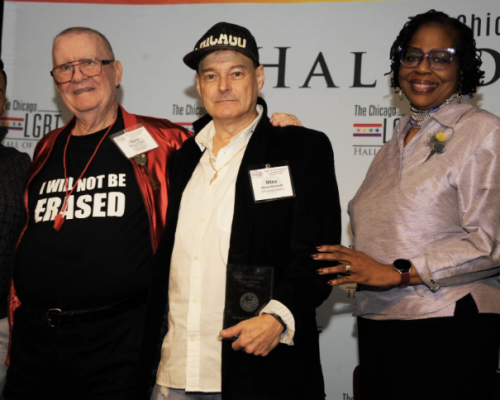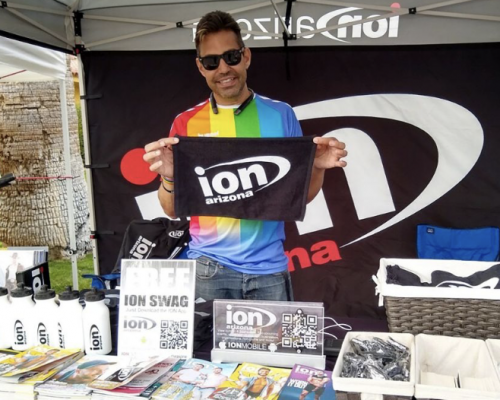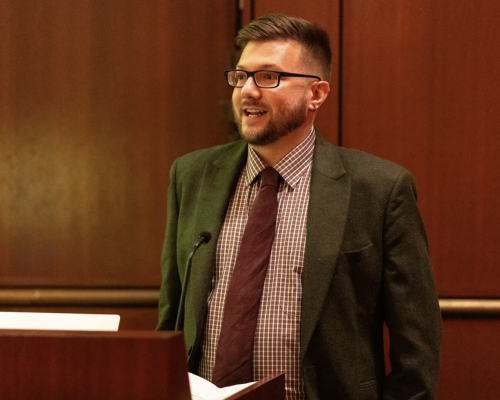Community Marketing Inc. report showcases latest trends in travel-spending and decision-making habits
by Chuck Colbert
For nearly two decades, a gay-owned San Francisco-based consumer-research company has tracked LGBT travelers, their interests, destinations, and brand preferences. While the information provided annually in a report by Community Marketing Inc. (CMI) is invaluable to the tourism and hospitality industries, survey findings are also of interest to LGBT media and vendors hoping to reach “our” community through gay media outlets.
This year’s survey, titled “CMI Community Marketing & Insights Year-End LGBT Travel Research Report,” included 10 top findings, one of which identified “LGBT media and mainstream media” playing “an equal role in influencing the travel decisions of gay men and lesbians.”
Even as mainstream and LGBT media continue their influence across the board, mainstream print magazines are far more influential for older LGBTs, with younger LGBTs relying on mainstream Internet sites.
During a recent telephone interview, David Paisley, CMI’s senior research director, spoke to the media findings. “The travel market spends a lot of money in LGBT media,” he said. “In a broad sense, for individual media, trying to understand what’s going on with the travel habits of their readers is a useful thing in trying to sell advertising,” as well as “in keeping readers informed” of travel trends and destinations, brand recognition, demographics and bookings, among other kinds of hospitality-industry information.
 |
David Paisley of Community
Marketing Inc. |
Sure enough, “Travel is almost a cultural component of the LGBT community,” said Paisley. “So travel is important to the readership” of gay publications and online media outlets.
A small sampling of publishers, editors, marketing communications and travel professionals agree: The CMI travel survey results ring true and are both helpful and useful.
Reactions
“It’s a great barometer for trends in gay travel,” said Billy Kolber, founder of Man About World (www.manaboutworld.com), a tablet-only travel magazine for gay men.
Kolber described New York City-based Man About World, only two years old, as providing “travel information and inspiration to gay men who love to travel.” (See sidebar “Digital publication satisfies gay men’s wanderlust” below.)
“It’s very helpful knowing travel trends,” said Bob Witeck, president and founder of Witeck Communications, a strategic public relations and marketing communications firm based in Washington, D.C.
Survey results from the report are “directional, telling us a lot about people’s interests, their preferences, attitudes and how they are changing,” Witeck said. Witeck Communications serves corporate and non-profit clients. The firm has no fiduciary responsibility or connection to CMI.
Better yet, said Jen Colletta, editor of Philadelphia Gay News (PGN), “This report is extremely helpful in tailoring our travel features to our readers. The CMI report explores the motivations that cause LGBT travelers to pick certain types of travel or certain destinations. Knowing what the community is looking for in travel is helpful in our creating editorial content that targets those motivating factors.”
What about publications serving lesbian readers? “I do find the information delivered by the CMI reports good and solid and consistent, over the number of years I’ve been receiving them, with other data and reports, which include Curve’s (www.curvemag.com) own reader survey,” said Curve editor in chief Merryn Johns. Curve is a leading source for lesbians in travel and leisure.
LoAnn Halden, media relations director for the International Gay & Lesbian Travel Association (IGLTA) also welcomed the survey and its findings. “Yes, the results do ring true. I think the important thing to note is that lesbians run neck and neck with gay men among those surveyed. Often the image of gay travelers is male-focused, but we’re out there exploring just as much. It’s also important to be aware on a question that results, say, in, ‘gay men stay in gay guesthouses more than women,’ that there are 20-some gay male guesthouses in Fort Lauderdale alone and zero for women. There just aren’t that many lesbian guesthouses period, so of course that answer will turn out that way.”
In all, “I think this data can help editors select destinations to feature that will speak to their readers. It’s also encouraging to see that media still matter to LGBT consumers,” she said.
Based in Fort Lauderdale, Fla., IGLTA (www.iglta.org) “is the world’s leading global travel network dedicated to connecting and educating LGBT travelers and the businesses that welcome and support them along the way,” according to its Web site.
Todd Evans, president and chief executive officer of Rivendell Media, attended the December gathering and said the results were “very well received,” at the same time acknowledging, “of course, it was a travel group and includes those interested in LGBT travel so that is what I would expect.”
Evans added, “One nice thing about the survey results is that they really support traditional print media. With so much news focused on digital media, it was nice to see that it still holds a very important place with consumers. It is one of the reasons that 2013 was a banner year for advertising in LGBT print as our soon to be released 2013 Gay Press Report also shows.” Rivendell, the nation’s leading gay and lesbian media ad placement firm, is based in Mountainside, N.J. Evans is also publisher of Press Pass Q.
Methodology
CMI’s findings stem from approximately 3,100 U.S. respondents whose responses were collected in November 2013. They were recruited through email invitation sent out to a 70,000-member CMI consumer research panel. The online survey took 10 minutes to complete, with respondents given an incentive of entering a drawing for $100 prizes or donating winnings to a charity of their choice.
CMI recruits participants from its proprietary research panel, which in part consists of members, attendees and readers from more than 250 LGBT media outlets, organizations and events. In other words, the survey results are representative of readers and consumers who interact with the LGBT community through such means.
And yet, just as a similar survey taken from readers of African-American or Latino publications would not be used to generalize to those respective populations or communities at large, so the LGBT survey results are not representative of all LGBTs.
Overall, 2013 saw a modest increase in LGBT leisure travel over the previous year — a five percent increase, according to CMI’s findings. Nonetheless, the trend towards a decrease in business travel continues from previous years.
“The funny thing,” said CMI’s Paisley, “is that before the recession [of 2008], the LGBT market was seen as almost recession proof” as “our travel spending has gone up and up through the years and never went down. When the recession hit, for the first time it went down,” and yet, “we were actually late in pulling back on our travel.”
Paisley said, too, that LGBT travel did “take a dip” during the recession, but it was “not as strong and continues to go up,” with “soft increases in the economy, soft increases in the LGBT community over time.”
Survey results and findings
Other key finds of the CMI 2013 travel research report include:
• Hilton is the number one large-brand hotel group, with Kimpton taking top honors among boutique brands.
• New York City ranked as the number one, most-visited destination among gay male travelers who stayed at least one night in a hotel, with Chicago and San Francisco tied for second. For lesbians, New York and San Francisco tied for first, with Chicago and Las Vegas tied for second.
• In selecting a hotel, wi-fi connection is a major factor for more than 70 percent of the LGBT community, and hotel brands that continue to charge for an Internet connection could be seen as having a competitive disadvantage.
• For LGBT parents, researching and selecting a hotel that is “child-friendly” becomes more important than an “LGBT-friendly” one, although both are important.
• More than 70 percent of LGBT travelers consider themselves to be a “planner” when arranging a vacation, with fewer than 15 percent considering themselves as “spontaneous” in their travel choices.
• More than 75 percent of LGBTs under the age of 45 use mobile devices, and among those who use mobile devices, more than 80 percent are doing so to find local restaurants and nearly 60 percent using them to research local attractions.
• For gay and lesbian couples getting married, no clear favorite honeymoon destination is evident, with responses varying across the United States, Canada and Europe. Still, the honeymoon destination with the highest numbers was Hawaii, but the islands represented only seven percent of couples.
• Pride celebrations continue to play an important role in motivating LGBT travel, with younger LGBTs even more likely than older gays to travel to another city for Pride.
Pride of travel
In assessing the report, were there any surprises in the results? Yes, said PGN editor Colletta. One surprise was the popularity of Pride events.
“I was particularly impressed by the information about Pride travel,” she said. “I didn’t expect Pride-related trips to be so popular across the board, among both men and women and varying age groups. I think that’s a great thing for PGN, as well as individual destinations, such as the city of Philadelphia, to keep in mind as Pride season approaches.”
For his part, Paisley said, “Pride is one of the few festivals that attracts everyone, young and old, male and female, transgender, everyone is there,” he said. “From our focus groups, [participants] tell us they will have a good time, and they will go to Pride events because they are assured of having a good time, with lots of gay people there. What young people tell us is that they are more fiscally challenged,” not having “good jobs or for whatever reason. They love going to Pride so they can go into the city, have a great time, and really don’t have to spend that much money. That is attractive to them” because “most events are free.”
DOMA’s fall boosts wedding travel
Although not specifically addressed in the travel report, the recent U.S. Supreme Court’s decision last summer striking down the Defense of Marriage Act as unconstitutional, Paisley said, has affected LGBT travel. The extension of federal benefits to all same-sex couples and recognizing their legal marital status nationwide has prompted some gay and lesbian couples to visit locations where they can legally marry, he said. “Particularly, from states like Georgia and Florida,” couples are traveling “to Washington, D.C., or New York City” where same-sex marriage is available.
Similarly, Paisley added, “Couples are going from Arizona and Utah — traveling out of state to get married” to locations such as California or Washington state.
These marriages are not often big events, Paisley said. Rather, “lots of little ceremonies. [Couples] have a few friends with them, but nonetheless that migration is happening and is happening big time,” which presents opportunities to travel companies ready to capitalize on the trend.
In addition, Man About World’s Kolber said CMI’s trends of marriage and child rearing “are well-reflected in the survey.”
“It’s no surprise for anyone who’s traveled, but child trumps gay when it comes to travel,” he said, referring to LGBT parents traveling with children. “We need to pay attention to [these] changing demographics of our community.”
Kolber also believes the “marriage and honeymoon business is going to be an important part of LGBT travel for a while.”
LGBT media approach to travel and tourism
Given that the LGBT community has long been bitten by the travel bug, how then do LGBT publications handle travel editorially?
“For several years,” said at San Francisco-based Bay Area Reporter news editor Cynthia Laird, “we have had a monthly travel feature story. We generally set up a calendar of destinations based on LGBT-friendliness, availability of the travel writers to get to the destination, and what works in terms of the ability to sell ads around those stories. These are not advertorial pieces; however, they are fully reported and if it’s in a location that has had some sort of incident, we mention that.”
Bay Area Reporter (BAR) also relies on two primary travel writers, Ed Walsh and Heather Cassell, both of whom have been doing these stories for several years, said Laird. In terms of promoting San Francisco, we do occasional stories related to local tourism.”
The head of San Francisco Travel, which is the city’s convention and visitors bureau, is an out gay man. BAR has featured him on occasion, she said.
Additionally, BARtab, the publication’s nightlife and sexuality section, has done regional travel features on locations such as Las Vegas. “East Bay [Oakland] and San Jose are given a ‘tourist’ treatment for San Franciscans,” said BARtab editor Jim Provenzano. “I also treat the nightlife listings as a freshly updated weekly batch of listings for locals and visitors alike. Similarly, the arts events listings are for locals and visitors to consider.”
PGN also relies on freelance reporting. PGN’s writer, Jeff Guaracino, “works on travel pieces for us once a month,” said editor Colletta. “He is an LGBT travel expert and covers everything from travel trends to specific destinations for LGBT travelers. We also run a summer-travel special issue each year, where we highlight summer vacation spots for LGBT tourists, as well as work on trend stories on the topic. We also have a dedicated summer-travel advertising section.”
For years now, Philadelphia has worked hard to make the city unabashedly LGBT-friendly. “While the majority of PGN’s readers are from the Philly area, we still strive to communicate our city’s growing reputation as an LGBT-friendly destination,” said Colletta. “We cover all the developments relating to our city’s LGBT-tourism campaigns, as well as the activities of the Philadelphia Gay Tourism Caucus. If our readers stay informed as to how much our city is doing to keep Philly atop LGBT-travel lists, it is our hope that they’ll spread this message to their non-Philly friends, and our reputation as an LGBT-friendly destination will continue to grow.”
At Curve, editor John mentioned two ways she generates travel editorial. “We accept press trips from LGBT-friendly [convention and visitors bureaus] and tour operators/destinations and explore their region and then write about it,” she said. “We accept freelance articles pitched to us by reliable and professional lesbian freelancers with a reputable travel history. For any destination covered, safety is a number one priority amongst our readers, therefore we don’t cover destinations unless one of our journalists has actually visited and can vouch for it.”
Rivendell’s Evans vouches for the importance of such reports as the CMI survey. “These reports, along with other surveys of the LGBT marketplace, are some of the best business tools available for gay media,” said Evans. “They provide tons of copy for the editorial department and targets for the sales department while at the same time promoting the gay market which is seriously in need of promoting. Mainstream media spends plenty of time on LGBT rights but provides almost no coverage of the actual market anymore. What we really need is more surveys on a whole range of topics to keep attention focused on the market so we can spur both local and national sales.”
TOP STORY
Volume 15
Issue 11







